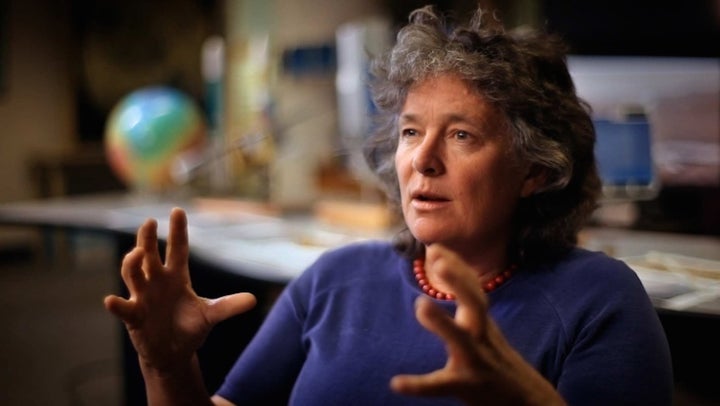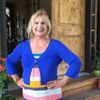
Fran Bagenal was a pioneer in the space program and is a role model for women in STEM.
Forty one years ago, Fran Bagenal was a graduate student at the Massachusetts Institute of Technology “and the only woman in our group” working on the plasma instrument for NASA’s Voyager mission to Jupiter.
Now a professor of astrophysical and planetary sciences at the University of Colorado-Boulder and chair of NASA’s Outer Planet Assessment Group, Bagenal says in 1977 “there were no other women scientists” working at the Jet Propulsion Lab in Pasadena, Cal.
That was the year Voyager was launched, and a mission honored in the PBS documentary, “The Farthest: Voyager in Space,” on its 40th anniversary this month.
For women in science, and physics and astronomy in particular since then, “the numbers have improved,” says Bagenal.
“I always felt supported by my colleagues, but now I have a lot more female colleagues, and we are not alienated,” says Bagenal, co-investigator on the New Horizons missions to Pluto as well as the chair of the Magnetospheres working group for the Juno mission to Jupiter.
One of her colleagues at NASA, also featured in “The Farthest,” and who will participate in the Take The Lead Virtual Happy Hour, is Linda Morabito, who joined the Jet Propulsion Laboratory in 1973 as a temporary summer employee and then again in 1974. She was a senior engineer in the Outer Planet and Navigation Section until 1981.
Morabito, author of Parallel Universes, a Memoir from the Edges of Space and Time, and associate professor of Astronomy at Victor Valley College, discovered in 1979 that the moon of Jupiter moon called Io was geologically alive.
For her work in space exploration and discovering the volcanic plume emanating from an active volcano on Io (considered by some planetary scientists as the largest discovery of the planetary exploration program), she was awarded three NASA Group Achievement Awards, for Voyager Flight Operations, Navigation Team; Voyager Mission Operations System Design, Ground Data Systems Development; Voyager Mission Design, Ephemeris Development and NASA’s Certificate of Appreciation.
In the decades since both of these space pioneers launched their careers, much has changed, but much more needs to be done for women in science and in all STEM fields.
NASA astronaut and biochemist Peggy Whitson recently broke the record for the longest time spent in space for any American man or woman—more than nine months.
“Astronaut Peggy Whitson touched down in Kazakhstan alongside a fellow American and a Russian in their Soyuz capsule, wrapping up a record-breaking mission. Whitson spent 288 on this latest mission aboard the International Space Station. But over the course of her career, she has been away from earth for three long-duration missions, an accumulation of 665 days — longer than any American ever and more time than any woman worldwide,” according to NPR.
Called an “American space ninja” by her Russian colleague aboard the spacecraft, Ahy Held write sin NPR about Whitson, “The Iowa native began working for NASA in 1989. She started astronaut training in 1996 and first docked with the ISS in 2002. By 2008, she was serving as the station commander — the first woman to do so, according to her NASA bio.”
In that time, “attitudes have changed as well,” towards women in space and science, says Bagenal, who also participated in NASA’s Gallileo, Deep Space I as well as Voyagers missions to Jupiter, Saturn, Uranus and Neptune.
“MIT was very proactive,” Bagenal says, “and has been graduating 30 to 40 percent of women in programs for many decades.” She adds, “What worries me are the ups and downs. The percentage of women getting physics degrees was up to 35 percent,” she says, and had been for the past 13 years. Those numbers are now down to 22-25 percent of women earning physics degrees in the U.S.
“As these programs are getting larger, more are attracting guys than women. Smaller schools are keeping a large fraction of women, but at large programs they are alienating women and the fraction of women is decreasing,” Bagenal says. “We need to find out why.”
Bagenal has been concerned with this pipeline issue for years, as she spells out in her 2004 presentation, “Leaky Pipeline of Women in Physics and Astronomy,” and her work for Women in Astronomy.
As a mentor to women in physics and astronomy, Bagenal says she has simple advice. “Follow your passion. Also make sure you get good grades in math and physics to keep your options open.”
At the undergraduate and graduate levels, Bagenal says too often women “try to do everything” and get involved in too many clubs or activities and take too many courses so their grades suffer.
Physics courses are particularly difficult after the first year and it is difficult with the instructor often just lecturing and offering no social support system of study groups. “Women need to work together and need support,” she says. A system of mentorship of senior level students and sophomores can help with this, she says.
What also helps women in science and all STEM are public events and activities that bring science into the popular culture and prove that “science is not only in a closed up lab.” The PBS documentary, “The Farthest” succeeds in that mission of showing the “humanity and the people involved,” she says.
Begenal, who is featured in the film along with Morabito, says, “The directors worked hard at having us all express our feelings about doing the science. But it is a disproportionate representation of women in the field” in the documentary, she says. There are not as many prominent women in the field as the documentary shows.
“I do blame Hollywood for showing only weird white guys as scientists,” Begenal says, even though the recent film, “Hidden Figures,” helped to bust the myths and show the importance of black female computers in the early days of space exploration.
Of course, compounding the myth that women are not leading in science or should be, are outbursts such as James Damore’s anti-diversity memo circulated at Google and far beyond earlier this summer, that also echoed the 2005 proclamations by then-president of Harvard University Lawrence Summers questioning the biological aptitude of women in math and science.
“I blame TV, movies, fashion and magazines, all that push gendered” notions of what women are capable of, Begenal says.
But working with young girls and women to get them interested in the possibilities of a career in science is worth the effort, she says. Many programs and inititatives around the country aim at brining girls and women into the STEM fields.
A new effort to interest students in elementary, middle and high school, as well as college level is the iFLY STEM education curriculum, that promotes field trip opportunities customized by teachers and STEM educators at iFLY tunnel nationwide, according to the company release. More than 60,000 students from 3,000 schools across the country have participated.
Aimed to encourage young girls and women, “The program uses iFLY’s state-of-the-art vertical wind tunnel to inspire and educate students about STEM. Trained and reviewed STEM educators guide students through an interactive presentation, demos in the wind tunnel and grade-appropriate lab activities.”
Yes, these programs can help, but Begenal has some very specific advice for any woman engaged in science and looking to a career in physics, astronomy or any STEM field.
“I worry that everybody is losing the time when you do deep thinking,” Begenal says. “Put distractions aside, put two hours aside for reading, writing, drawing, focusing on something creative.”
As they say, then the sky is the limit.
This post originally ran in Take The Lead.
